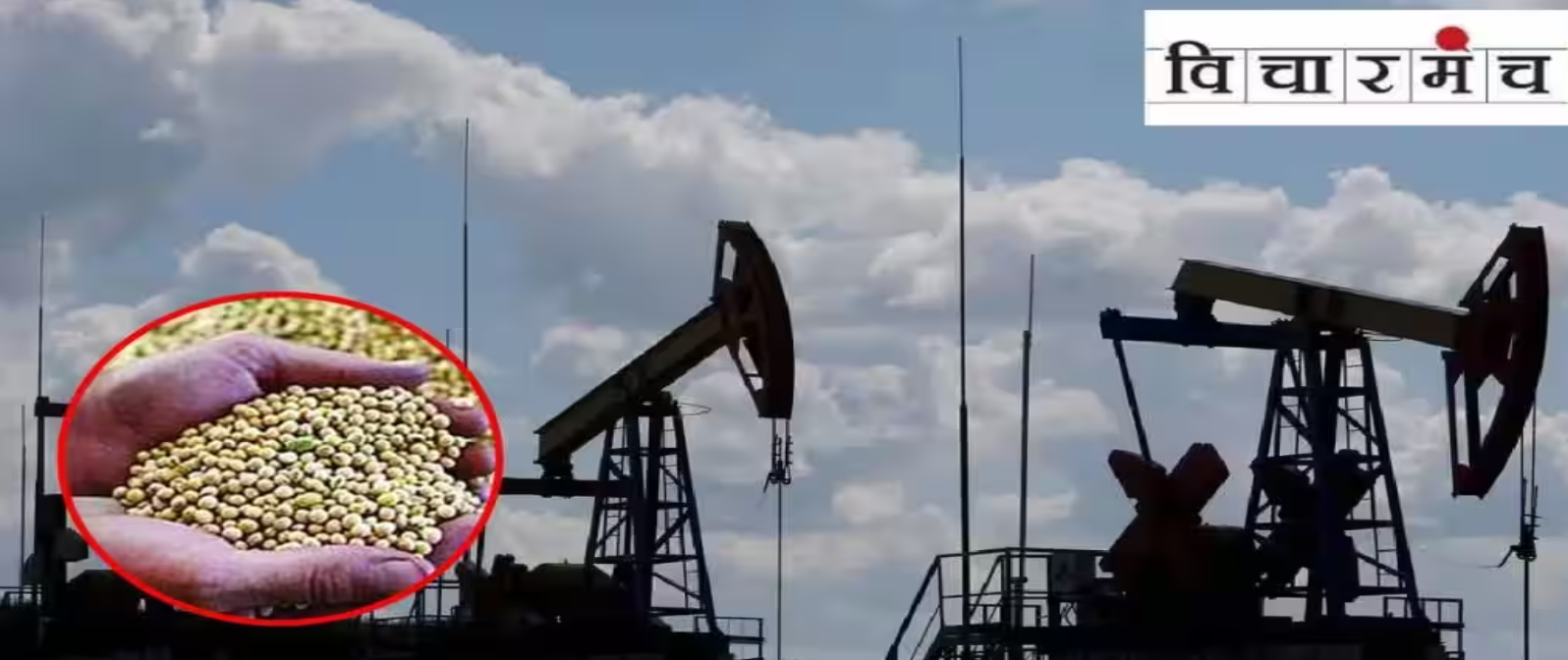Substitution of ethanol from sorghum to reduce mineral oil load

India was not self-sufficient in mineral oil, is not today and is not likely to be self-sufficient in future. India does not have much reserves of mineral oil or natural gas like Gulf countries Russia or America. Therefore, India has to spend about 16 lakh crores of foreign exchange every year for the import of mineral oil. As we do not earn large amounts of foreign exchange through the export of goods and services, the foreign exchange spent on the import of mineral oil and natural gas is a huge burden on the Indian economy. This situation is when the price of mineral oil is 93 dollars per barrel. But in the next three years, the price of mineral oil is likely to increase to 150 dollars per barrel. P. Morgan has expressed this organization. If mineral oil becomes expensive like this, it will adversely affect the development process of India. It is necessary to start efforts to avoid this danger from now.
The government is trying many ways to reduce the import of mineral oil. For example, diesel consumption is being reduced by electrifying railway lines. Also, efforts are being made to reduce the use of cars by starting metro services in cities. Now cars, two-wheelers and three-wheelers have started running on electricity instead of petrol or diesel. Also buses and trucks have started running on green hydrogen. In the future, the vehicles running on the road will run on electricity or dyhydrogen instead of using petrol or diesel. But the existing vehicles cannot be converted into electric or hydrogen vehicles. Due to the high cost of production of vehicles that use other fuels instead of petrol or diesel, the practice of government subsidizing such vehicles is prevalent all over the world, but how long the Indian government can afford to provide such subsidies is also a big question.
Developing and poor countries face new challenges. One of the major challenges is climate change. It is not easy for any government to deal with all such problems. A practical step taken by the Government of India to reduce the import of mineral oil is to mix ethanol with petrol. At present, about 12 percent ethanol is mixed with petrol. The government is trying to increase that ratio to 20 percent. Another important plus is that ethanol is a more environmentally friendly fuel than petrol. But ethanol is not produced in sufficient quantity and at low cost in India. These errors can be rectified in a short period of time.
At present, the government has allowed the production of ethanol directly from sugarcane juice. Companies distributing such ethanol buy petrol at a price of around Rs 65 per litre. Should a water-scarce country like India grow a water-intensive sugarcane crop and produce ethanol from its juice, even when there are better alternatives, the answer to both these questions is no.
Ethanol has also been produced from rice in recent times in India. Like sugarcane, rice production requires a lot of water. Ethanol produced from rice is also purchased by petrol distribution companies at the rate of Rs 65 per litre. In this way, the work of producing ethanol at a reasonable rate using large quantities of water is going on in India. While they are also two better options available!
The food corporation provides rice at the rate of Rs.20 per kg to produce ethanol using rice. The same rice is made available to traders for sale in the open market at Rs 31 per kg. Instead of producing ethanol directly from sugarcane or rice, if it is produced from sweet sorghum, it will easily be available at Rs 35 per litre. Sugarcane crop requires 33 thousand cubic meters of water per hectare. Water requirement for sweet jowar crop will be limited to 4000 cubic meters. The said crop will yield sorghum for making bread. Ethanol can be produced from the sweet sap of the crop and the remaining pulp can be used as animal feed. A document on this is available on the Internet. That information was written by Ramesh Chand and his colleagues about 12 years ago. Ramesh Chand is currently a member of Niti Aayog’s think tank. And surprisingly, today they seem to be swallowing mung beans in terms of ethanol production from sweet sorghum. Production of ethanol from sweet sorghum is underway in Brazil and China. This crop cannot be grown in cold climate. Therefore, sweet sorghum cannot be sown on lands like Europe, America, Canada. India’s climate is favorable for this crop, but farmers or industrialists in India seem to prefer the sugarcane crop.
With 18% of the world’s population and only 4% of water availability, India should not grow crops like sugarcane and rice. But such crops are widely grown in India. Hence, water is available for growing crops like vegetables and fruits. The end result is that the population remains massively malnourished. In very recent times, an Indian man has invented ethanol production using carbon dioxide. Ethanol produced using this technique will be available in the market at Rs 35 per litre. Union Minister Nitin Gadkari ‘s son is going to set up an ethanol factory in Nagpur district using this technology .
A large number of ethanol plants from sweet sorghum and plants using carbon dioxide to produce ethanol will be available in India at a price of Rs 35 per litre. By making small modifications to the engine of the cars, the vehicles can be run with more than 20 percent ethanol in the petrol. Not only this, but vehicles that run entirely on ethanol can be produced. In this way, the import of mineral oil can be reduced in a phased manner.
Although India does not have mineral oil reserves, other alternatives are now available. So there is no reason to panic because mineral oil has become expensive. No one can stop India’s economic growth.
padhyaramesh27@gmail.com
















